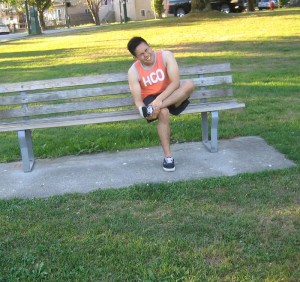Chilblain is painful inflammation affecting the small blood vessels found in the skin that occurs as a reaction to sudden warming from a cold temperature. It causes itchiness, swelling, red-colored patches and blistering of the extremities such as the toes, ears, nose and the fingers.
Chilblains simply heal on its own, especially when the weather gets warmer within one to three weeks, but they can recur seasonally for years. Chilblains do not result in permanent injury, but they can cause an infection which becomes severe if left untreated.
Chilblains usually occur on the finger, nose and toes and they become cold quickly. The red toes are very painful and tender and in severe cases, the skin breaks which will cause ulcers and increases the risk for infections.

Symptoms of chilblains
If an individual develops the following symptoms, it simply indicates that he/she is developing chilblains.
- Blistering
- Swelling of the affected areas
- Small, itchy areas on the skin, usually on the feet and hands
- Change in skin color such as red to dark blue and there is pain
- Burning sensation felt on the skin and an ulceration
Causes of chilblains
Chilblains is the result of an unusual reaction to the cold and during cold weather, the blood vessels found near the surface of the skin becomes narrow, thus causing the blood to flow deeper into the skin. This is the normal response of the body to cold and is intended in preserving the temperature of the body.
When the skin is again exposed to warm temperature, the blood vessels found near the surface of the skin will expand and the flow of blood returns to normal.
If the skin is heated quickly such as placing the feet in hot water or near a heater, the blood vessels found near the surface of the extremities cannot hold the increased flow of blood. This will create a blockage and causes the blood to leak into the surrounding tissue and there is swelling and itchiness caused by the condition. People with conditions such as diabetes and peripheral vascular disease are susceptible to develop red and painful toes after exposure to cold.
Treatment and home remedies of chilblains
The following measures can help minimize the discomfort caused by the condition.
- Cover the toes with woolen socks and gloves when the person has to go outdoors.
- Swelling and red-colored toes due to cold exposure can oftentimes cause itchiness. Avoid scratching the toes in order to prevent infection.
- Apply oil over the affected area or apply an anti-itch ointment in order to prevent itching.
- Stop smoking since it affects the circulation of blood.
- Eat nutritious food which includes a variety of vegetables and fruits since they are rich sources of antioxidants which helps in the proper circulation of blood and the healing process.
- Encourage the individual to engage in exercises regularly.
